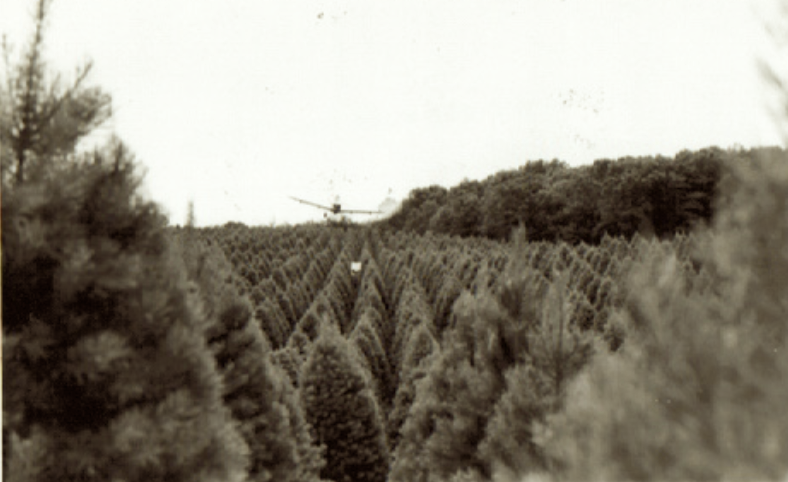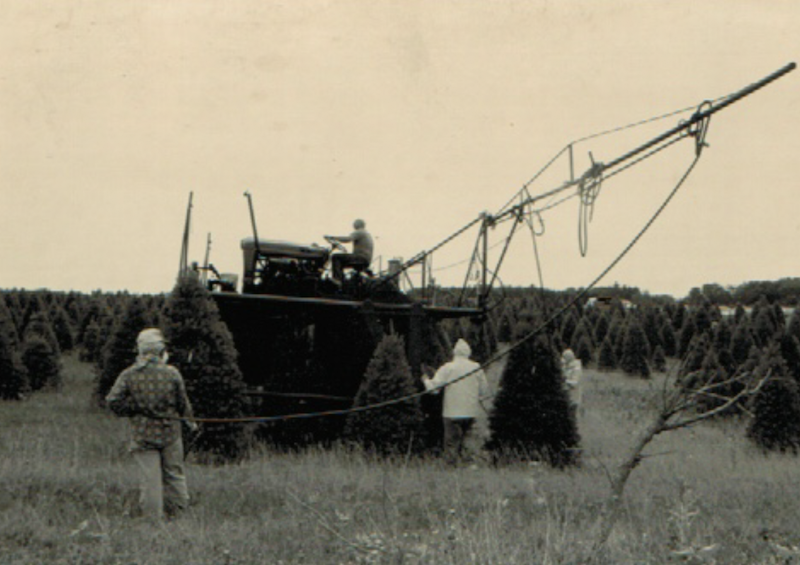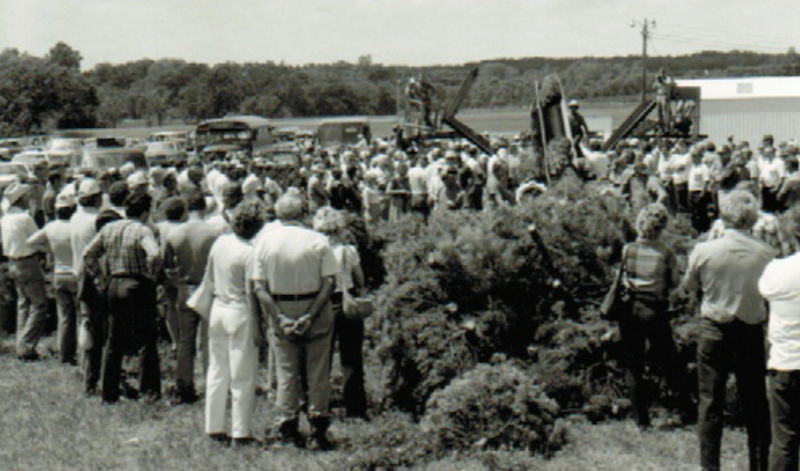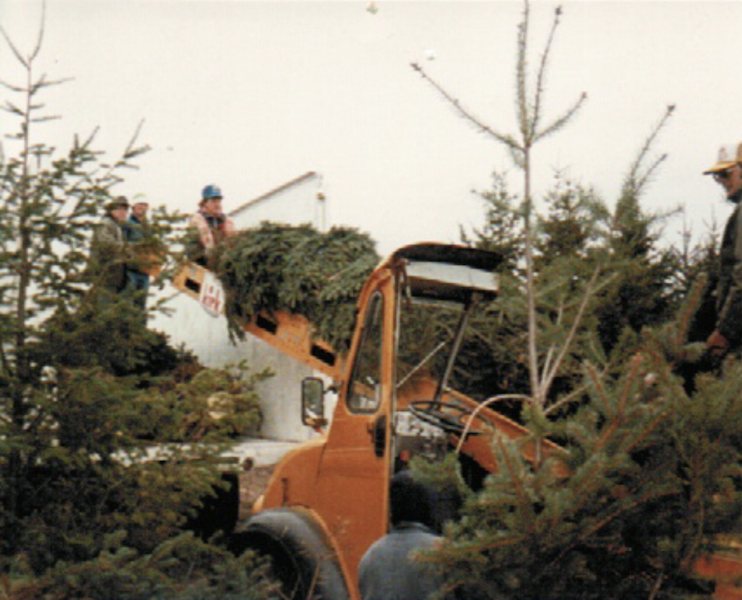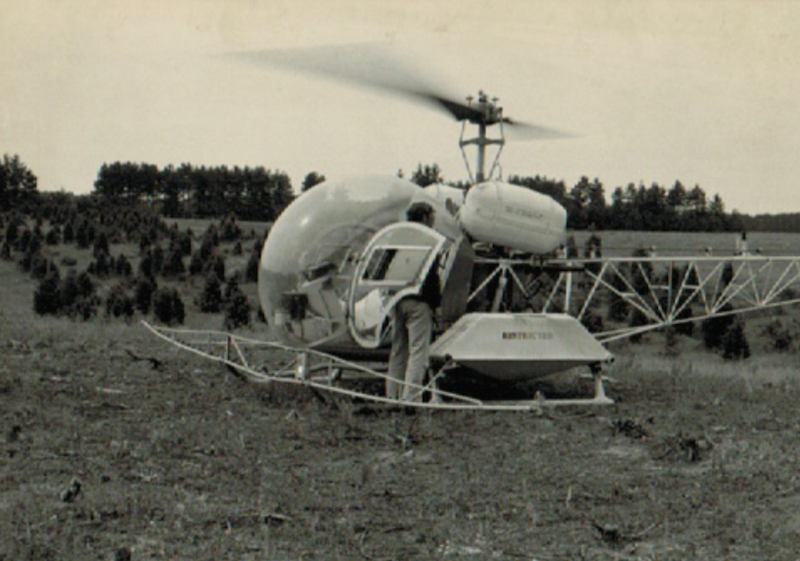The Kirk Company Story:
Our Story
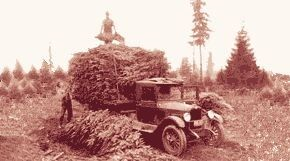 |
Lured by the Alaskan gold rush in 1898, George Ridgway Kirk, known as G.R., left his home in Pennsylvania for Seattle, Washington. Before reaching his destination, G.R. met miners digging graves for the victims of an epidemic rather than digging for gold. He decided to return home and then traveled to North Carolina to learn the lumber business. By 1902, he returned to the northwest and was successfully running a planning mill. In 1918 G.R.'s brother-in-law residing in El Paso, Texas, called and ordered a railroad car of Christmas trees for a local florist. "A stupid idea." thought G.R., as he told his foreman to cut the Texan a carload of wild Douglas fir. The next year he received an order for two train cars. That got his attention. He immediately cut three carloads (approximately three thousand trees) for himself and headed to Los Angeles where he set up shop at the 8th and Alameda railroad tracks. He sold all of his trees and thus began the Kirk Christmas tree business. By 1928, Kirk Company was producting up to twenty-five rail cars annually. When the stock market crashed in October of 1929, it became difficult to make ends meet. Through ingenuity and perseverance, G.R. met the challenge and set the stage for future growth. |
In 1931 G.R.’s son Paul agreed to work for his father "temporarily". A few years later, Paul built a fifteen foot house trailer. He and his wife, Dorothy, spent the next ten years traveling throughout the United States and Canada developing and marketing the Christmas tree business. During this time, they not only expanded the market for Kirk trees but made hundreds of friends during their visits. During this time, they became the proud parents of three children, Paul “Rick”, Morris “Mac”, and Ann Kirk.
In 1936 during Paul's travels in the Maritime Provinces of Canada, he found a large supply of Spruce and Balsam Firs for the Northeastern market. He moved quickly and set up 50 farms throughout Nova Scotia, New Brunswick and Quebec.
Until the early forties, most Christmas trees were cut from naturally reseeded forests or abandoned farms and pastures and then transported to markets. By the mid forties the transition to plantation grown or farm raised trees had caught on and most trees were being harvested from these farms. The advantage of plantations over the forests is that cultivation, fertilization, shearing, and cutting large volumes of trees could be done more economically while maintaining high quality standards.

 xxxxxxxxxxxxxxxx
xxxxxxxxxxxxxxxx
In 1950 Paul Kirk decided to produce Scotch pine and within a few years nearly a thousand acres were planted. These trees were heavily sheared to give them that traditional Christmas tree shape. If you could shear Scotch pine trees, thought Paul, why not shear Douglas fir and other species? To surprise the competition, he began by shearing ten acres in secret. Eventually the company was shearing two thousand acres of trees in Canada and Washington.
Sales expanded. The company saw a shift from smaller deliveries to small grocery stores to large orders from chain stores that were able to attract a larger market. To meet the demand, the company had to make a change. In 1953, the Kirks began purchasing deserted farms in flat lands near Wautoma, Wisconsin. Spanning more than ten thousand acres, the Wautoma Plantation was once the largest of all the Kirk operations.
In 1956, G.R. and Paul Kirk were featured on the cover of Business Week magazine and given special recognition for their achievements. They had built one of the largest Christmas tree companies in the world, harvesting and marketing trees all across the continent. Father and son had played complementary roles. G.R. had remained in the corporate offices in Tacoma, Washington giving administrative support to Paul who couldn’t sit still. Paul was always at the front lines developing new markets, finding new trees, and improving operations. His dynamic personality and drive created company growth that constantly challenged G.R.’s administrative skills.
In time, Paul's three children became the third generation to run the Kirk Company. During those years, the Kirk Company made its mark on the Christmas tree industry with innovative field production methods and high quality standards. It had successful operations located in Oregon, Wisconsin and Nova Scotia. It also introduced a number of support products to expand the Christmas tree line. Products included balers and netting, tree colorants, nutrients, and disposal bags. Then under Rick’s leadership, the Kirk Company expanded its presence internationally. The Kirk Company sold trees to Puerto Rico, Guam, Mexico, Central and South America and the Pacific and Caribbean Islands.
In 2008 Ralph Nilssen, the company's VP of Sales, and Gary Snyder, the Oregon Production Manager purchased the Kirk Company from the Kirk family. With 50 years of experience between them, Ralph and Gary understood the value of hard work and the importance of maintaining the Kirk Company's solid reputation for quality products and excellent service. In their first years as owners, the company expanded sales in both the Christmas tree division and in the product line division domestically and internationally. A North Carolina production yard was also added. Kirk now ships Christmas trees from four locations; Oregon, North Carolina, Wisconsin and Nova Scotia. In 2010, the Kirk Elf Tree™ was successfully launched into various markets. That same year, Kirk made good on its promise of excellent service by expanding their shipping options to include palletized Christmas trees.
Gary Snyder acquired full ownership of the Kirk Company in January of 2015. Since then we have continued to invest in developing new products, expanding markets and exceeding our customers' expectations. As the Kirk Company approaches its 100th birthday, we continue to push boundaries while staying true to our commitment to providing our customers with quality products, buyer-focused solutions and cutting-edge customer service.
